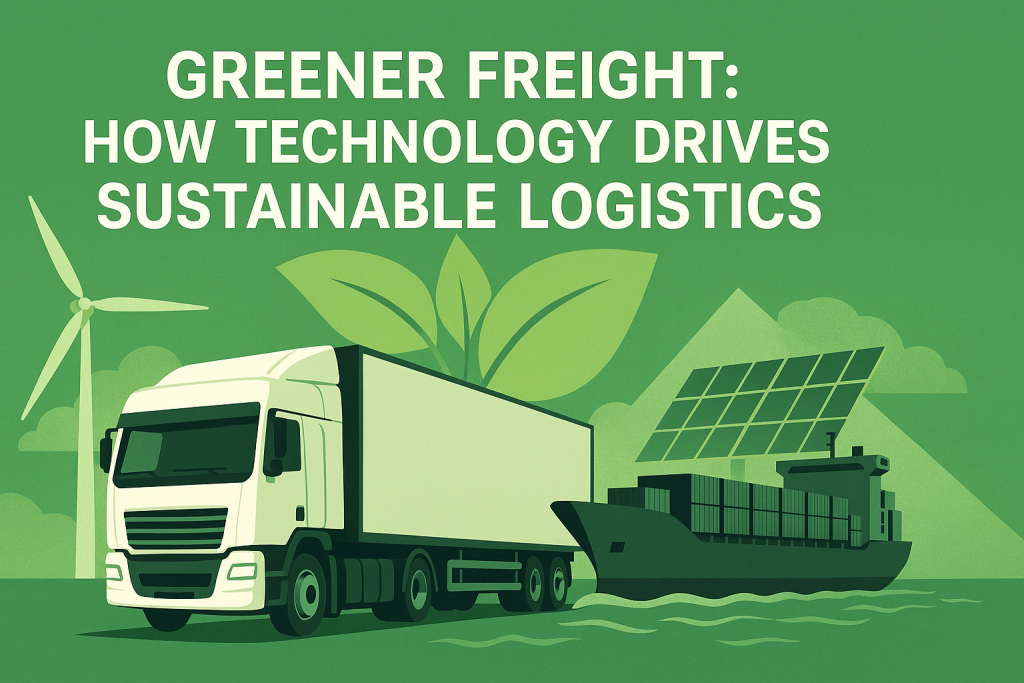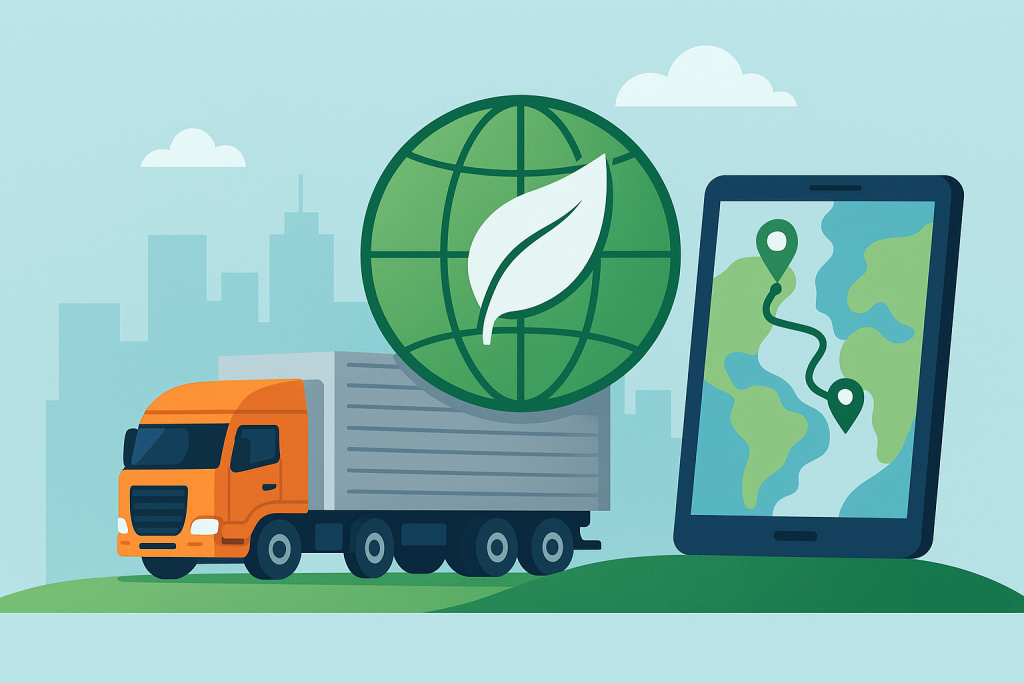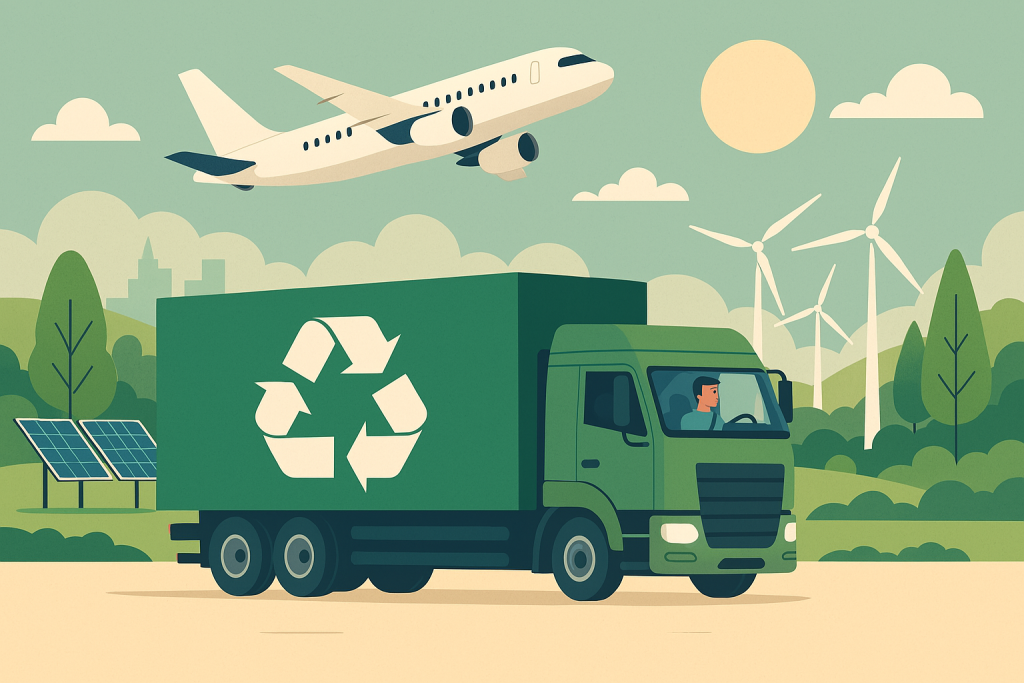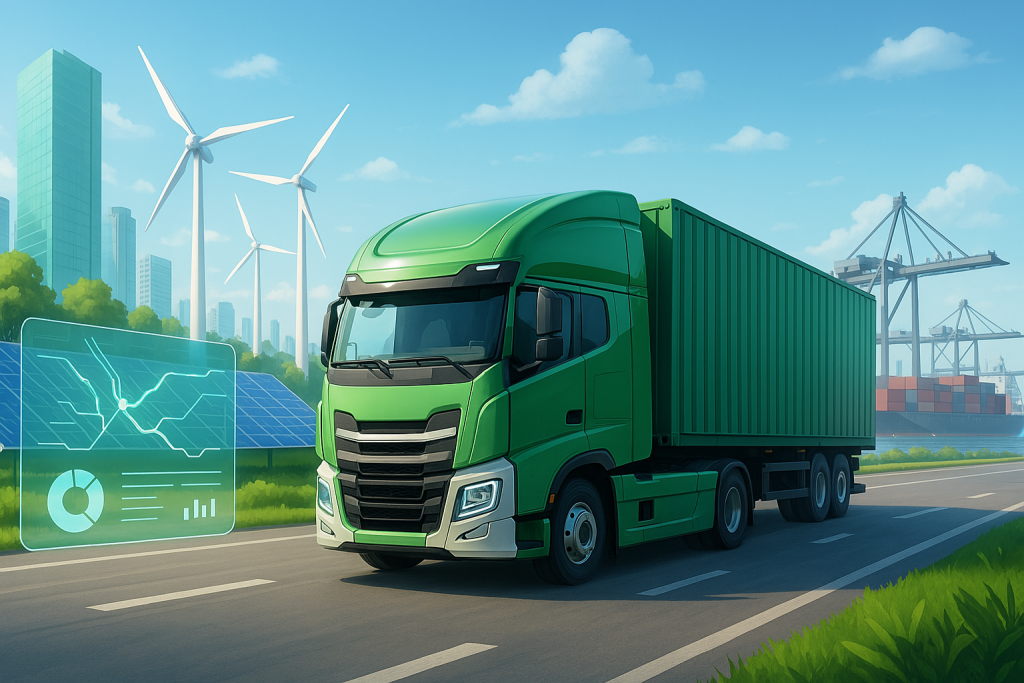Greener Freight: How Technology Drives Sustainable Logistics
Enter sustainable logistics technology — a powerful ally in reducing emissions, waste, and inefficiencies without compromising performance.

🚛 The Environmental Impact of Freight Logistics
Freight and transport account for nearly 30% of global CO₂ emissions. Contributing factors include:
- Inefficient routing and empty miles
- Heavy reliance on fossil fuels
- Manual processes leading to delays and waste
- Lack of visibility across the supply chain
Reducing this footprint is not only essential for the planet — it’s also becoming a competitive advantage in global trade.

🔧 How Technology Powers Sustainable Logistics
1. Route Optimization Algorithms
Advanced route planning tools use real-time traffic data, weather conditions, and delivery constraints to calculate the most fuel-efficient paths.
✔️ Fewer miles driven = lower emissions and fuel costs
2. Automated Load Planning
Software can optimize container space, pallet placement, and cargo weight distribution — reducing trips and maximizing vehicle efficiency.
✔️ Less wasted space = fewer trips
3. IoT & Telematics for Energy Monitoring
Connected devices track fuel consumption, tire pressure, and engine health in real time — encouraging proactive maintenance and eco-driving.
✔️ Better maintenance = lower emissions and longer vehicle life
4. Electric and Alternative Fuel Integration
Software platforms are integrating EV-compatible route planning and alternative-fuel scheduling, helping companies make the shift away from diesel.
✔️ Electrification is now easier to manage and measure
5. Carbon Footprint Tracking & Reporting
Freight management platforms now offer built-in tools to track carbon output per shipment — enabling carbon audits and sustainability reporting.
✔️ Essential for meeting ESG and regulatory targets

📦 Linbis and Sustainable Freight (Optional)
While many solutions exist, some freight software platforms — like Linbis — support sustainable logistics by:
- Providing real-time route optimization
- Reducing paperwork and admin waste
- Tracking CO₂ output per shipment
- Encouraging digital workflows over paper trails
This enables freight forwarders to cut costs while reducing their carbon footprint — a win-win for business and the planet.
🌍 The Bigger Picture: Smart + Sustainable Supply Chains
Sustainable logistics is more than cleaner trucks. It’s about creating smarter supply chains where technology improves:
- Efficiency
- Resource allocation
- Energy usage
- Transparency across operations
By combining tech innovation with environmental responsibility, the logistics industry is taking bold steps toward a greener future.

📌 Conclusion: Technology Is the Freight Forwarder's Greenest Tool
From AI-powered route optimization to real-time emissions tracking, technology is the key to unlocking sustainable logistics. Forwarders that invest in digital tools today are preparing not just for profitability — but for long-term environmental compliance and global leadership.
The road ahead is green — and digital.
